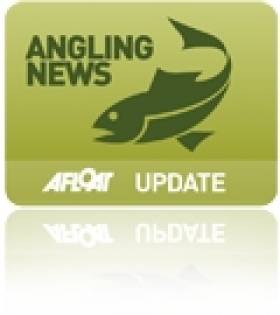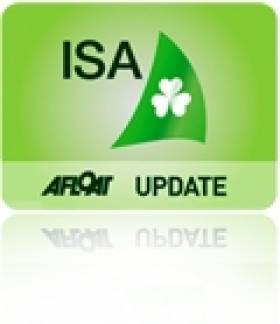Displaying items by tag: Sport
#Budget14 - Ireland's marine sector receives an increased capital allocation of €10 million, while the Marine Institute and Bord Iascaigh Mhara (BIM) will each get a funding boost for 2014, as details of the latest Budget emerged yesterday (15 October).
Marine Minister Simon Coveney announced the €10 million allocation "to maintain the infrastructure at the [Department of Agriculture, Fisheries and Marine's] fishery harbour centres and local authority fishery harbours which makes and valuable contribution to Ireland's marine sector," according to a department statement.
Similarly, the capital allocation to the Marine Institute "is being increased to €10 million to cover the cost of its ongoing research programme as well as upgrading its research vessels", while BIM receives €6.5 million "to assist the implementation of the revised Common Fisheries Policy".
There was also some good news in the Budget for businesses in the angling and aquatic tourism sectors, the retention of the 9% VAT rate for the hospitality sector, as well as a cutting of the Travel Tax to 0% as an incentive to boost visitor numbers on the back of this year's Gathering initiative.
In addition, €8 million in funding has been allocated for developing the Wild Atlantic Way, which Tourism Minister Michael Ring says will "ensure that this new west coast route lives up to international expectations".
Sports funding, however, took another hit - with the Irish Sports Council set to receive some €3.1 million less next year than in 2013. The Score has more details on the funding cut, which effectively rolls back State expenditure on Irish sport to 2006 levels.
It is as yet unclear which sports will be fare worst from the reduction - although community sports clubs nationwide are expected to receive new funding for essential works such as changing rooms and lighting via a new round of the Capital Sports Programme.
Codling, Coalies Providing Great Sport for Wexford's Winter Anglers
#ANGLING - The winter shore angling season on Wexford's coast has been "exeptional" so far, writes Ashley Hayden in the Enniscorthy Guardian.
With cod shoals moving north into the Irish Sea, some impressive catches of codling have been reported at Tinnebearna and Courtown.
"The cod stock off Ireland's south coast, judging by the fish which I have encountered over the last three years, are now of egg-laying size," writes Hayden.
"Managed properly over the near future, Ireland may just have a working resource again, of benefit to both commercial and recreational interests."
Coalfish are also becoming more prevalent, and are providing great sport to Wexford's shore anglers.
Hayden writes: "Coalies are smash and grab raiders, darting in to grab your bait, hitting it hard before subsequently swimming away and re-grouping, only to have another go."
The Enniscorthy Guardian has more on the story HERE.
Sailing Body Elects First Female President
In one of her last official functions as Minister for Sport, outgoing local TD Mary Hanafin attended the Irish Sailing Association's annual Ball last Saturday in the Royal Marine Hotel in Dun Laoghaire.
Attended by 315 people the black tie ball featured an awards ceremony that has been hailed 'a great success' by the association.
On Saturday afternoon the association elected a new President, Niamh McCutcheon, the first female ISA President since the organisation was founded in 1945.
A collection in aid of the RNLI raised over €2,250.
Award details below:
ISA Sailing Achievement of the Year
This award is presented by the ISA to recognise the outstanding achievement in a sailing craft by an Irish person or in Ireland during 2010.
Winner: Nicholas 'Nin' O'Leary, Royal Cork Yacht Club
Nicholas' achievements included narrowly beating his father Anthony at the ISA All Ireland Championships in 2010 by just a single point after a nail-biting finale in difficult conditions off Kinsale in November. The win made it three-in-a-row for this remarkable young 24 year old sailor - the only person to achieve this in the 64 years of the event's history.
ISA Volunteer of the Year
This award is given to a member of an ISA affiliated club or class who has made a significant voluntary contribution to their sport during 2010.
Winner: Brian Craig, Royal St. George Yacht Club.
Brian has been nominated by the Royal St. George Yacht Club for the vital role he has played in developing sailing in Ireland and specifically Dun Laoghaire over the past 40 years. His most recent success was winning the bid for Dun Laoghaire to host the 2012 ISAF Youth Worlds.
ISA Youth Sailor of the Year
This award is presented by the ISA to recognise the outstanding achievement by a sailor competing in ISA Performance Pathway boats during 2010.
Winner: Finn Lynch, Blessington Sailing Club
Placing 2nd overall at the Topper World Championships in 2010 left the Carlow sailor in good stead for a Youth Sailor nomination. A determined sailor and strong character, it's clear that with these strengths Finn has the potential to go far in our sport.
ISA Instructor of the Year
This award recognises the role instructors have in providing access to our sports. The final 5 have been nominated by their students with the ultimate winner selected by an ISA judging panel.
Winner: Aine Carroll, Rush Sailing Club
Aine has been an ISA instructor for the last 11 years, instructing both adult and junior sailors in Rush Sailing Club. A keen Mermaid sailor, her love of sailing, her enthusiasm for the sport and willingness to give her time to her sailors have been infectious and remarkable. Apparently the kids at the club think she is a 'legend' and 'cool'!
ISA Training Centre of the Year
The face of ISA water sports to thousands of participants. The best in 2010 as nominated by their students.
Winner: University of Limerick Activity Centre
Situated on the sheltered shores of Lough Derg, University of Limerick Activity Centre has been in operation for over a decade. ULAC provides a varied programme of adventure activities to the general public. The University of Limerick Activity Centre runs ISA courses in sailing dinghies, windsurfers, powerboat as well as emergency care training courses.


























































